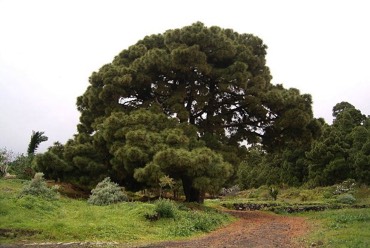Plants and Animals
The Canary Island Date Palm
The Canary Island Date Palm (Phoenix canariensis) is one of the most grown and popular ornamental trees of the world. The Canary Islands is its native habitat, which is renowned for its richness in climatic diversity and native plant life.
The wild populations of palms suffered a dramatic decrease during the early centuries of the Spanish colonisation of the islands, which started at the end of the 15th century. Today the Canary Island Date Palm is sparsely and un-evenly distributed across all the islands.
The Canary Island Date Palm (Phoenix canariensis) is one of the most grown and popular ornamental trees of the world. The Canary Islands is its native habitat, which is renowned for its richness in climatic diversity and native plant life.
The wild populations of palms suffered a dramatic decrease during the early centuries of the Spanish colonisation of the islands, which started at the end of the 15th century. Today the Canary Island Date Palm is sparsely and un-evenly distributed across all the islands.
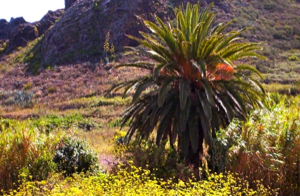
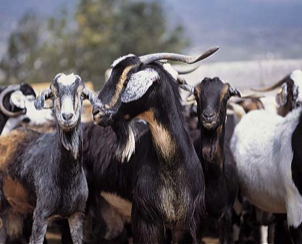
Goats and the Canary Islands
The Canary Isles were conquered by Spain in the 13th and 14th centuries, and goats were already present on the islands. Canarians have been breeding goats for centuries, and nowadays goats are the most important livestock resource on the islands (more than 400,000 animals).
There are three native dairy goat breeds in the Canary Islands – all with a common ancestor, the Paleocanaria goat – and most of their milk is used to make traditional cheese. The wild population disappeared during the last century, although there are still signs of the ancient population in their domesticated offspring.
The Canary Islands’ Camel - Camello Canario
The Camello Canario is a dromedary, but keeps the name of ‘camel’ which has been traditionally used by the islanders. There are currently some 1,200 animals on the islands.
The first ‘Camelus dromedarius’ were brought over to the Canary Islands from Africa in around 1405, and were essential to the European colonisation of the islands. They adapted well to the local conditions and expanded throughout the archipelago, particularly in the south of Gran Canaria and Tenerife and across the islands of Fuerteventura and Lanzarote. They were used to carry people and goods, and also had an important role in agriculture.
The islands’ indigenous population is the only breed of Camelus dromedarius to be recognised in Europe and, compared with other breeds of dromedary, has a relatively strong constitution, is of medium size, and is well-proportioned. It’s a stocky beast with a well-developed chest and a muscular conformation.
Today, the Canaries camel is generally used in the tourist industry. They are used as a means of transport on excursions to the islands’ national parks and nature reserves, including the Timanfaya National Park on Lanzarote.
The Camello Canario is a dromedary, but keeps the name of ‘camel’ which has been traditionally used by the islanders. There are currently some 1,200 animals on the islands.
The first ‘Camelus dromedarius’ were brought over to the Canary Islands from Africa in around 1405, and were essential to the European colonisation of the islands. They adapted well to the local conditions and expanded throughout the archipelago, particularly in the south of Gran Canaria and Tenerife and across the islands of Fuerteventura and Lanzarote. They were used to carry people and goods, and also had an important role in agriculture.
The islands’ indigenous population is the only breed of Camelus dromedarius to be recognised in Europe and, compared with other breeds of dromedary, has a relatively strong constitution, is of medium size, and is well-proportioned. It’s a stocky beast with a well-developed chest and a muscular conformation.
Today, the Canaries camel is generally used in the tourist industry. They are used as a means of transport on excursions to the islands’ national parks and nature reserves, including the Timanfaya National Park on Lanzarote.

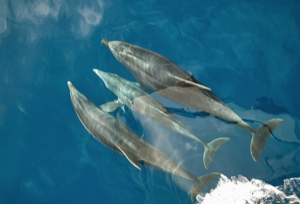
Dolphins
The Canary Islands are internationally known as home to a large number of whales and dolphins. The species that are most likely to be encountered are the Bottlenose Dolphin and the Long Finned Pilot Whale.
The Canary Islands are internationally known as home to a large number of whales and dolphins. The species that are most likely to be encountered are the Bottlenose Dolphin and the Long Finned Pilot Whale.
La Palma Giant Lizard
The La Palma Giant Lizard disappeared for nearly 500 years before being found in 2007. It was believed to have gone into decline with the arrival of humans on its native home in the Canary Islands.
Little is known about these lizards, as only one individual has been found in recent history, measuring about a foot long. Researchers plan to revisit the area to attempt to find a breeding population.
The La Palma Giant Lizard disappeared for nearly 500 years before being found in 2007. It was believed to have gone into decline with the arrival of humans on its native home in the Canary Islands.
Little is known about these lizards, as only one individual has been found in recent history, measuring about a foot long. Researchers plan to revisit the area to attempt to find a breeding population.
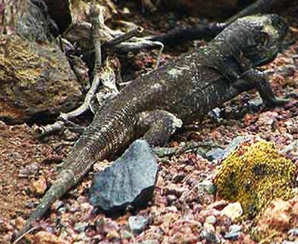
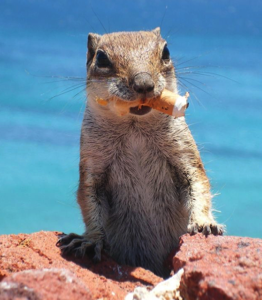
Chipmunks in Fuerteventura
Barbary ground squirrels, also known as chipmunks, were introduced to Fuerteventura from North Africa where they were kept as popular household pets in the 1960s.
These entertaining creatures escaped into the wild, where the population thrived in a natural environment similar to their homeland, but without the natural predators.
Over time, the numbers of chipmunks have increased to an estimated 300,000 and are now a threat to the island’s endemic species.
Barbary ground squirrels, also known as chipmunks, were introduced to Fuerteventura from North Africa where they were kept as popular household pets in the 1960s.
These entertaining creatures escaped into the wild, where the population thrived in a natural environment similar to their homeland, but without the natural predators.
Over time, the numbers of chipmunks have increased to an estimated 300,000 and are now a threat to the island’s endemic species.
El Hierro Giant Lizard
The El Hierro Giant Lizard is a very large lizard that can grow beyond 20 cm in length, and now lives only on the island of El Hierro. Their number is down to 300 to 400, including those returned to the wild by humans.
The number of El Hierro Giant Lizards has dropped because of a scarcity in food plants and an increase in attacks by seagulls and other animals. Although the extent of human-induced changes to the ecosystem is unknown, with so few El Hierro Giant Lizards in existence, any further human-induced changes to their environment could cause them to rapidly become extinct.
The El Hierro Giant Lizard is a very large lizard that can grow beyond 20 cm in length, and now lives only on the island of El Hierro. Their number is down to 300 to 400, including those returned to the wild by humans.
The number of El Hierro Giant Lizards has dropped because of a scarcity in food plants and an increase in attacks by seagulls and other animals. Although the extent of human-induced changes to the ecosystem is unknown, with so few El Hierro Giant Lizards in existence, any further human-induced changes to their environment could cause them to rapidly become extinct.
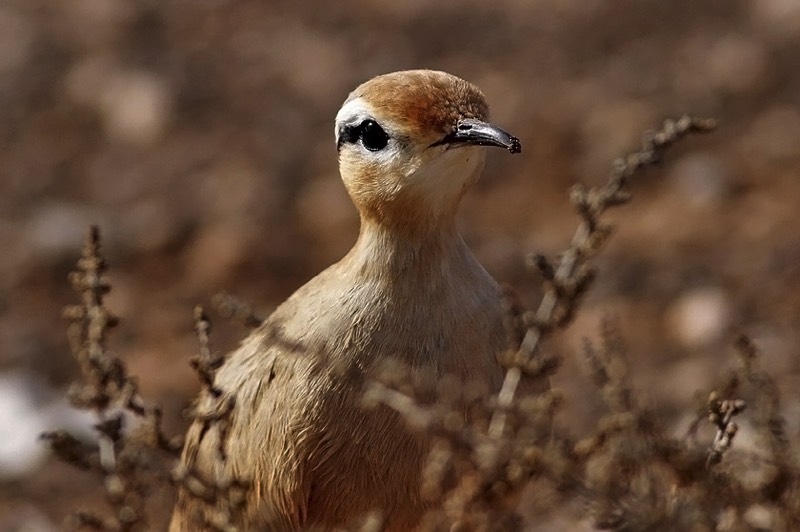

Corredor (cursorius cursor bannermami)
There is a very small population of this delightful bird in the Canary Islands, with a population estimated at between 200-250 pairs.
It is present on the islands of Lanzarote, Fuerteventura, La Graciosa, Tenerife and Gran Canaria, but considered extinct as a breeding species in Gran Canaria.
It is present on the islands of Lanzarote, Fuerteventura, La Graciosa, Tenerife and Gran Canaria, but considered extinct as a breeding species in Gran Canaria.
Canary Island pine (Pinus canariensis)
The Canary Island pine (Pinus canariensis) is an evergreen that is native to the outer Canary Islands. This pine is heat resistant, fire resistant, and does not tolerate hard frosts; therefore, this pine only grows in the subtropics. This pine also tolerates the extreme differences in rainfall ranging from less than 7.87 inches per year to several thousand inches per year. The Canary Island pine is the tallest tree growing in the Canary Islands, but large trees are rare due to over-cutting.
